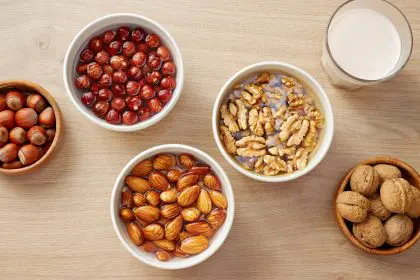The quest for longevity has fascinated humanity for centuries, with countless supplements, diets, and lifestyle changes promising extended years. Recent research reveals a surprisingly straightforward dietary modification that consistently correlates with significant lifespan extension – reducing processed and red meat consumption. This single change appears capable of adding approximately five years to life expectancy through multiple biological mechanisms.
The surprising impact of meat reduction on longevity
Substantial evidence from large-scale population studies shows that reducing meat consumption, particularly processed and red meat, associates with remarkable longevity benefits. These findings emerge consistently across diverse populations, geographic regions, and research methodologies.
The most comprehensive analyses, tracking hundreds of thousands of participants over decades, reveal that those who minimize red and processed meat consumption live approximately 3-7 years longer than heavy meat consumers, with the average benefit hovering around five years. This lifespan extension remains significant even after accounting for other lifestyle factors.
The relationship appears dose-dependent – the greater the reduction in meat consumption, the more substantial the longevity benefit. Even modest reductions, such as limiting red meat to once weekly instead of daily, correlate with measurable lifespan extension.
Notably, the benefits extend across age groups. While younger adults show the most dramatic potential gains from early dietary shifts, older adults transitioning to lower-meat diets still demonstrate meaningful life extension, suggesting it’s never too late to benefit from this dietary change.
Understanding how meat affects biological aging
The connection between meat consumption and reduced lifespan stems from multiple biological mechanisms affecting how our bodies age at the cellular level.
Inflammation serves as a primary pathway through which meat consumption accelerates aging. Red and processed meats contain compounds that trigger inflammatory responses throughout the body. While acute inflammation helps fight infections, chronic low-grade inflammation damages tissues over time, accelerating age-related decline and disease development.
Oxidative stress increases with higher meat intake. Compounds in cooked meat, particularly when grilled, fried, or processed, generate free radicals that damage cellular components, including proteins, lipids, and DNA. This cellular damage accumulates over time, contributing to accelerated aging.
Meat consumption affects telomeres – protective caps on chromosome ends that shorten with age. Studies show that regular red meat consumption associates with accelerated telomere shortening, a key biological marker of aging. Conversely, plant-based diets correlate with better telomere maintenance.
The gut microbiome, increasingly recognized as crucial for overall health and longevity, changes significantly with diet. High meat consumption, particularly processed meat, promotes growth of bacterial species associated with inflammation and chronic disease, while reducing beneficial bacteria that produce anti-inflammatory compounds.
Metabolic pathways involved in longevity respond to dietary patterns. Specifically, mammalian target of rapamycin (mTOR) – a pathway regulating cell growth, proliferation, and survival – becomes overactivated with high animal protein consumption, potentially accelerating aging processes.
Protection against major age-related diseases
Reducing meat consumption significantly decreases risk for several major age-related diseases that commonly reduce both lifespan and healthspan.
Cardiovascular disease risk drops substantially with decreased red and processed meat intake. The saturated fat, heme iron, carnitine, and chemical preservatives in meat contribute to atherosclerosis development, blood pressure elevation, and inflammation within blood vessels – all key factors in heart disease progression.
Cancer risk, particularly colorectal, pancreatic, and prostate cancers, decreases markedly with reduced meat consumption. Processed meats, classified as Group 1 carcinogens by major health organizations, contain nitrates and nitrites that form potentially carcinogenic compounds during digestion and cooking.
Type 2 diabetes development slows with meat reduction. High meat consumption, especially processed varieties, correlates with insulin resistance and impaired glucose metabolism, key factors in diabetes development. Plant-focused diets demonstrate superior blood sugar regulation.
Neurodegenerative diseases including Alzheimer’s and Parkinson’s show reduced incidence among those who minimize meat consumption. The anti-inflammatory effects of plant-predominant diets appear to protect brain tissue from the oxidative damage and inflammation that contribute to cognitive decline.
Kidney function preservation improves with meat reduction. High animal protein intake increases kidney workload and may accelerate function decline, particularly in those with existing kidney issues or risk factors like hypertension or diabetes.
The blue zones connection: Lessons from longevity hotspots
Regions with extraordinarily high concentrations of centenarians – known as blue zones – provide real-world evidence for the life-extending effects of reduced meat consumption.
These longevity hotspots, including Okinawa (Japan), Sardinia (Italy), Nicoya (Costa Rica), Ikaria (Greece), and Loma Linda (California), share remarkably similar dietary patterns despite geographical and cultural differences. All feature minimal meat consumption, with animal products typically serving as occasional additions rather than dietary foundations.
In traditional Okinawan culture, meat historically comprised less than 10% of caloric intake, consumed primarily on special occasions. Their traditional diet centered on sweet potatoes, vegetables, and legumes with minimal animal products – coinciding with some of the world’s highest centenarian rates.
Sardinian shepherds, despite regular physical activity, consume meat sparingly – typically once weekly or on special occasions. Their daily diet emphasizes whole grains, legumes, vegetables, and moderate dairy from sheep and goats rather than cattle.
In Loma Linda, California, a community of Seventh-day Adventists demonstrates lifespan extension of approximately 7-10 years compared to average Americans. Their predominantly plant-based dietary approach, with many members consuming little or no meat, correlates strongly with their exceptional longevity.
Practical approaches to reducing meat consumption
Implementing this life-extending dietary shift needn’t require radical change. Several practical approaches make meat reduction sustainable and enjoyable.
The flexitarian approach offers a balanced starting point for many people. This semi-vegetarian pattern focuses on plant foods while allowing occasional meat consumption. Start by designating several meat-free days weekly, gradually increasing their frequency as comfort with plant-based meals grows.
The Mediterranean pattern, widely studied for its health benefits, provides a blueprint for moderate meat consumption. This approach emphasizes vegetables, fruits, whole grains, legumes, nuts, seeds, and olive oil while limiting red meat to a few times monthly and favoring fish and poultry as animal protein sources.
Plant-forward cooking techniques help create satisfying meals with less meat. Try using meat as a flavoring component rather than the centerpiece, incorporating small amounts into vegetable-rich stir-fries, soups, or pasta dishes. This approach, common in many traditional cuisines, maximizes flavor while minimizing meat quantity.
Meat alternatives provide familiar textures and flavors during transition. Modern plant-based products offer increasingly convincing substitutes for burgers, sausages, and other meat products. Additionally, culinary traditions worldwide offer time-tested meat alternatives like tempeh, seitan, and tofu that provide satisfying protein sources.
Gradual reduction often proves more sustainable than abrupt elimination. Consider beginning with processed meats – the category most strongly linked with health risks – before addressing fresh red meat consumption. This stepwise approach allows taste preferences and cooking habits to adapt progressively.
Nutritional considerations for optimal health
When reducing meat consumption, attention to nutritional adequacy ensures the dietary shift supports optimal health and longevity.
Protein adequacy remains achievable without heavy meat consumption. Complete plant protein sources include soy products, quinoa, buckwheat, and hemp seeds. Additionally, traditional combinations like beans with rice, hummus with whole grain bread, or lentils with barley provide complementary amino acid profiles.
Iron absorption requires strategic planning with plant-based eating. Consume vitamin C-rich foods alongside iron-containing plant foods to enhance non-heme iron absorption. For example, add citrus fruit to spinach salad or bell peppers to bean dishes. Cook in cast-iron cookware to increase iron content of foods.
Vitamin B12, naturally occurring only in animal products, requires attention during meat reduction. Include fortified foods like nutritional yeast, plant milks, or breakfast cereals in your diet. Those significantly limiting animal products should consider supplementation under healthcare guidance.
Zinc appears abundantly in meat but also exists in plant foods like legumes, nuts, seeds, and whole grains. Soaking and sprouting these foods before cooking reduces phytates that can inhibit zinc absorption, maximizing nutritional benefit.
Omega-3 fatty acids, crucial for cardiovascular and brain health, can be obtained from plant sources like flaxseeds, chia seeds, hemp seeds, and walnuts. These provide alpha-linolenic acid (ALA), which converts partially to the DHA and EPA forms found directly in fatty fish.
Environmental and ethical dimensions of meat reduction
Beyond personal health benefits, reducing meat consumption addresses broader issues that may indirectly affect human longevity through environmental and social pathways.
Climate impacts from animal agriculture contribute significantly to environmental conditions affecting human health. Livestock production generates approximately 14.5% of global greenhouse gas emissions. Reducing meat consumption helps mitigate climate change, which increasingly threatens human health through extreme weather events, changing disease patterns, and food security challenges.
Water conservation improves with reduced meat consumption. Producing one pound of beef requires approximately 1,800 gallons of water, compared to 216 gallons for soybeans and 108 gallons for corn. As water scarcity affects more regions globally, dietary choices that conserve water resources support long-term population health.
Land use efficiency increases dramatically with plant-focused diets. Growing plants for direct human consumption requires substantially less land than producing the same nutrition through animals fed cultivated crops. This efficiency becomes increasingly important as population growth puts pressure on agricultural resources.
Antibiotic resistance development slows with reduced meat demand. Approximately 80% of antibiotics in some countries go to livestock, often for growth promotion rather than disease treatment. This practice contributes to antibiotic-resistant bacteria development, a growing public health threat that could significantly impact future life expectancy.
Balancing tradition, culture, and health
Dietary changes intersect with cultural practices, traditions, and personal enjoyment. Finding a sustainable approach means honoring these dimensions while making health-promoting shifts.
Cultural food traditions often contain wisdom worth preserving. Many traditional cuisines worldwide use meat sparingly, as flavoring or for special occasions, while emphasizing plant foods daily. Exploring these traditional approaches offers both culinary enjoyment and health benefits.
Family recipes can often be adapted rather than abandoned. Experiment with reducing meat quantities while preserving familiar flavors through traditional seasonings and cooking methods. This approach maintains cultural connections while aligning more closely with longevity-promoting patterns.
Social dining situations can present challenges when reducing meat consumption. Consider approaches like the “special occasion” mindset – saving meat consumption for truly meaningful social gatherings while choosing plant-focused options for everyday meals.
Cooking skills development facilitates successful dietary shifts. Invest time in learning to prepare delicious plant-centered meals that satisfy both nutritionally and culinarily. This culinary education pays dividends in both health outcomes and eating enjoyment.
Long-term sustainability: Finding your personal balance
The most effective dietary pattern for longevity is ultimately the healthy approach you can maintain for decades. Finding your sustainable balance with meat consumption maximizes both lifespan and quality of life.
Personal experimentation helps identify your optimal approach. Some individuals thrive with complete meat elimination, while others maintain excellent health with minimal, high-quality meat consumption. Monitor your energy, digestive comfort, and overall wellbeing as you adjust your diet.
Psychological sustainability matters alongside nutritional considerations. Overly restrictive approaches often lead to eventual abandonment. Allow flexibility for special occasions, travel, and cultural experiences while maintaining your chosen pattern most of the time.
Regular reassessment keeps your dietary approach aligned with current health needs, which may change with age, activity level, or health conditions. What works perfectly at 30 might need adjustment at 50 or 70 to support optimal health.
Professional guidance can provide personalized support for this dietary shift. Consider consulting a registered dietitian who can help design a meat-reduction plan tailored to your specific health needs, preferences, and lifestyle.
By thoughtfully reducing meat consumption while ensuring nutritional adequacy, you can implement this remarkably effective dietary change and potentially add approximately five healthy years to your life – a substantial return on a relatively straightforward investment in your long-term wellbeing.

















